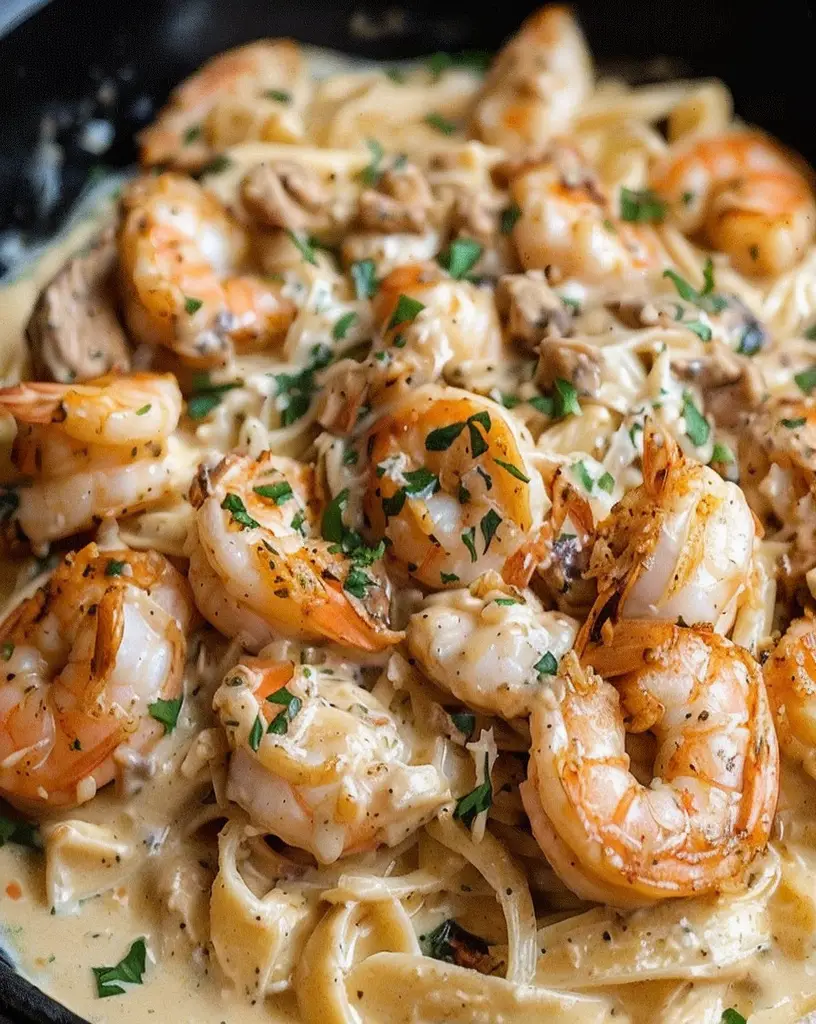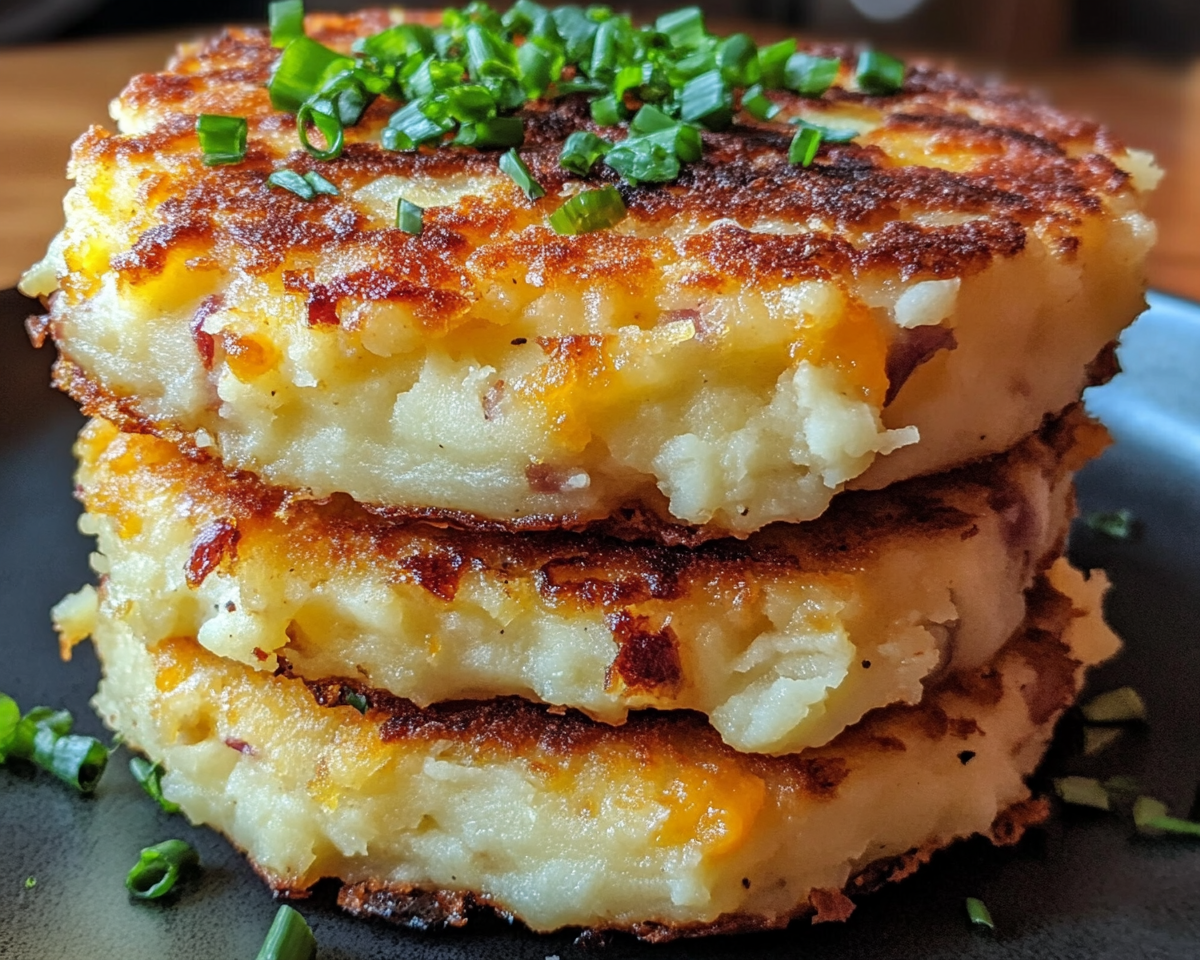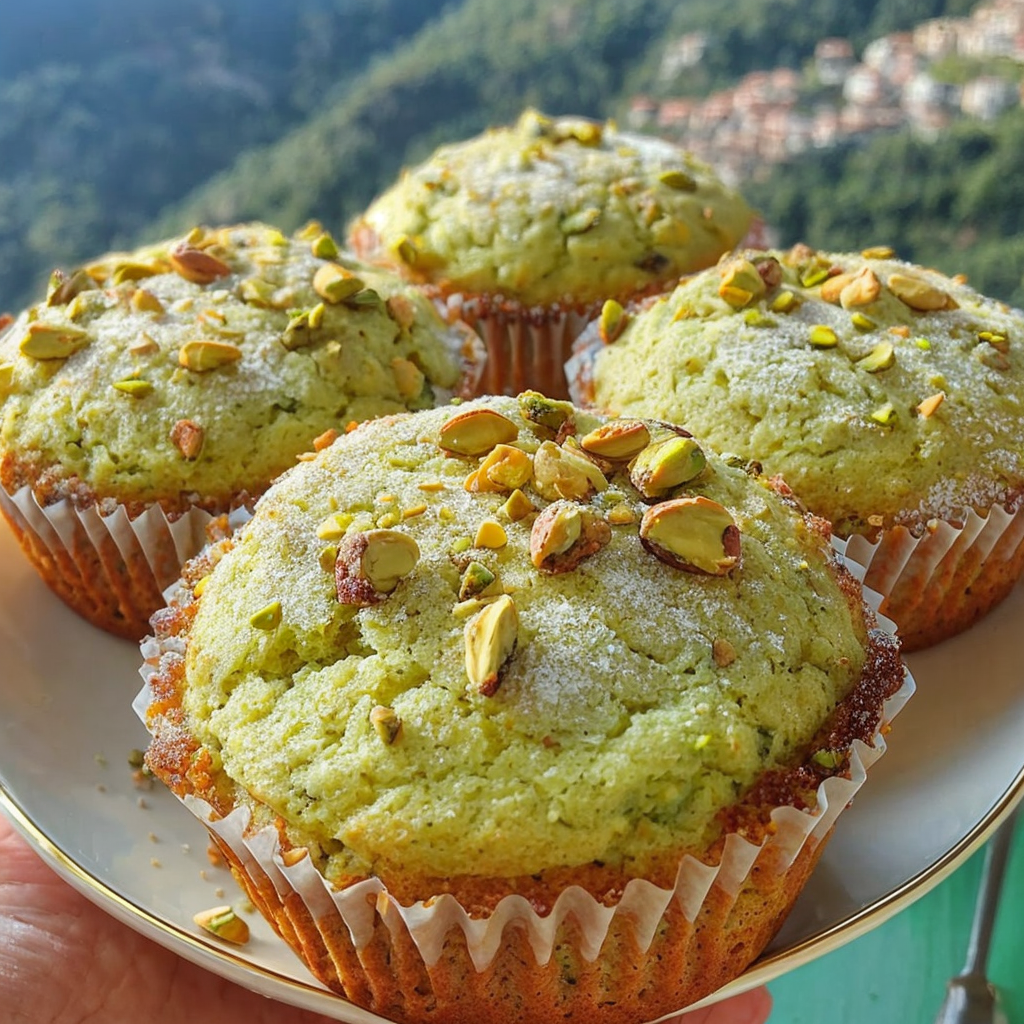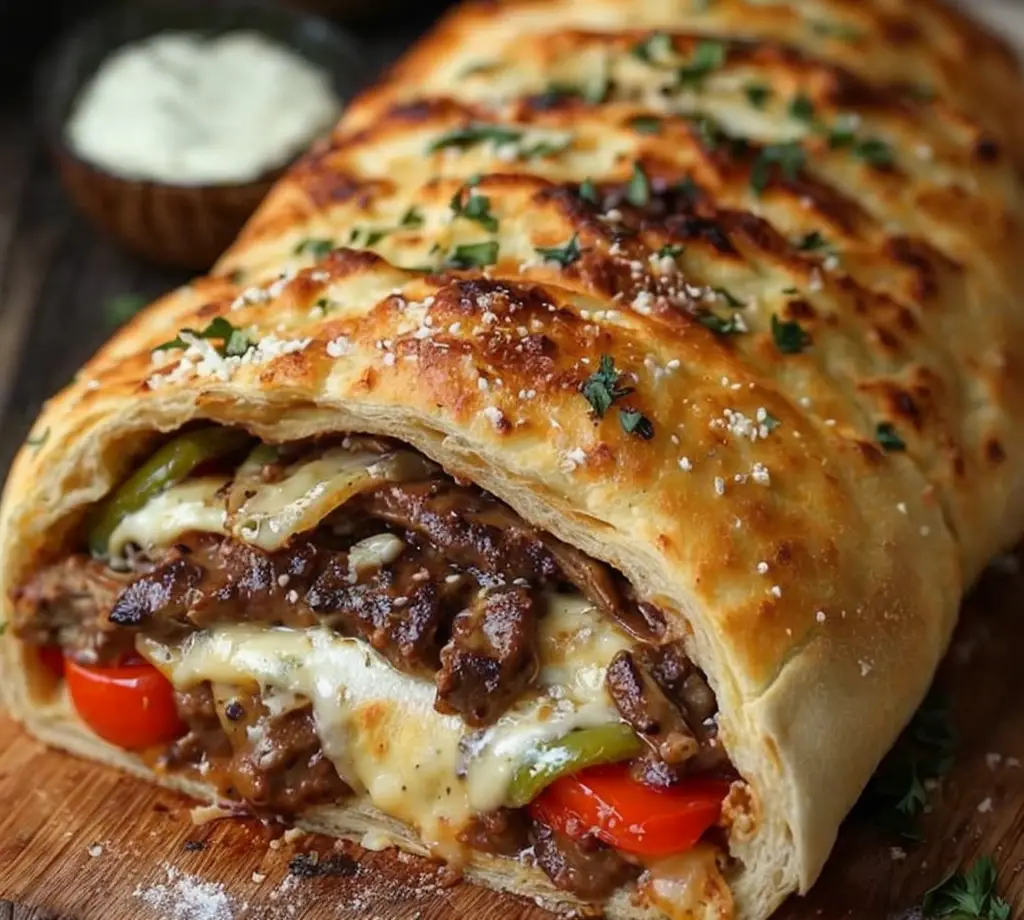Cajun Chicken and Shrimp Alfredo Recipe 🍝 – Easy Dinner Idea 🍴
Indulge in the ultimate comfort food experience with this Cajun Chicken and Shrimp Alfredo recipe. Combining succulent chunks of seasoned chicken and juicy shrimp with creamy, rich Alfredo sauce, this dish is perfect for a cozy dinner at home. The spice of Cajun seasoning beautifully complements the velvety Alfredo, creating a burst of flavor that’s both hearty and satisfying. Whether it’s a family meal or a special occasion, this easy dinner idea brings a taste of restaurant-quality pasta right to your table.
Experience the magic of flavors as bold Cajun spices meet smooth, creamy Alfredo sauce. Each bite is a delicious dance of textures—from the tender chicken and shrimp to the luxurious, silky pasta coating. The fusion of these distinct elements leads to a memorable culinary experience that will leave everyone craving for more. This Cajun Chicken and Shrimp Alfredo recipe is not just a meal; it’s an occasion in itself.
Quick Recipe Highlights
- Flavor Profile: Expect a harmonious blend of spicy and creamy, with a hint of garlic and herbs.
- Texture: Enjoy tender and juicy proteins with perfectly cooked pasta swimming in a luscious sauce.
- Aroma: Smell the inviting mix of garlic, spices, and cheese as it fills your kitchen.
- Visual Appeal: A vibrant mélange of golden-brown chicken, shrimp, and fresh parsley garnishes on a creamy pasta backdrop.
- Skill Level Needed: Moderate skills required, mainly for timing and sequence management in cooking proteins and sauce simultaneously.
- Special Equipment: Basic kitchenware like a pot, skillet, and strainer; optional use of a microplane for fresh parmesan.
Recipe Overview
- Difficulty Level: Considered medium due to the need for multitasking between sauces and proteins but straightforward with prep done right.
- Category: This recipe falls under main course and pasta categories, ideal for hearty dinners.
- Cuisine: A satisfying fusion of Italian and Cajun cuisines, bringing creamy Alfredo together with spicy Southern flavors.
- Cost: Relatively affordable, with chicken, shrimp, and cheese being the main cost factors balanced by pantry staples.
- Season: Perfect year-round, although its warmth and spices suit colder months beautifully.
- Occasion: Excellent choice for family dinners, date nights, and dinner parties where you aim to impress.
Why You’ll Love This Recipe
The Cajun Chicken and Shrimp Alfredo recipe stands out due to its unique taste and texture appeal. The spicy Cajun seasoning and creamy Alfredo sauce create a perfect contrast, resulting in a dish that’s both flavorful and comforting. The juicy shrimp and tender chicken add protein that complements the creamy pasta, making each bite a delightful experience.
Convenience is another big plus of this recipe. With a total cooking time of just 45 minutes, it’s an easy dinner idea perfect for busy weeknights. Preparation can be streamlined with simple ingredients and minimal cooking techniques, ensuring you can enjoy a delicious homemade meal without much hassle.
Nutritional advantages lie in its balance of protein from chicken and shrimp, along with carbs from pasta. While it’s rich, using fresh ingredients and controlled portions makes this recipe a relatively healthy indulgence. You can customize it further by adjusting the cream or opting for whole-grain pasta.
In terms of social and entertaining value, this dish garners compliments for its restaurant-style quality and impressive flavors. Whether it’s family night or Friday friends gathering, this recipe brings the wow factor to the dining table, encouraging interaction and enjoyment.
Cost-effectiveness and accessibility make it accessible for most shopping budgets, using a combination of pantry goods and fresh items like chicken and seafood. No need for exotic ingredients; its appeal lies in the quality and cooking techniques that enhance the flavors of everyday items.
Historical Background and Cultural Significance
Cajun cuisine has its roots in Southern Louisiana, influenced by French, African, and Spanish culinary traditions. This recipe takes inspiration from traditional Cajun cooking, which emphasizes bold spices and rich flavors, and combines it with Italian pasta culture, known for its creamy and cheesy bases.
The cultural importance of blending Cajun and Italian influences shines through in this recipe, illustrating the dynamic nature of American cuisine where diverse flavors come together. Such recipes showcase the adaptability of Cajun spices with globally loved dishes like Alfredo pasta.
Evolution of the recipe reflects modern palates that seek the thrill of fusion dishes. While traditional Cajun and Italian recipes stand robustly on their own, combining them creates a new culinary experience that satisfies multi-ethnic flavor cravings.
Regional variations might involve swapping shrimp for other seafood like crawfish or using different pasta types. Across regions, the basic principle remains: a spicy and creamy blend that unites contrasting textures and flavors into one harmonious dish.
Ingredient Deep Dive
Chicken is the star protein, offering culinary versatility and broad appeal. In southern cooking, chicken is often used as a base for flavor-rich meals. It absorbs Cajun spices well, enhancing both taste and aroma. Choose boneless, skinless chicken breast for the best texture in this recipe.
Nutritionally, chicken provides lean protein and essential minerals like selenium, known for supporting thyroid health and metabolism. It’s a staple protein choice due to its low-fat content and high vitamin B6 levels, crucial for heart health and energy metabolism.
Storage recommendations suggest raw chicken should be kept refrigerated or frozen, ideally consumed within two days of purchase when fresh. Opt for airtight containers or butcher paper for freezing to prevent freezer burn. For leftover cooked chicken, store it for up to four days in the refrigerator.
Substitution options can include boneless thighs for richer flavor or turkey breast for a leaner alternative. Ensure that any substitute follows appropriate cooking time adjustments for optimal tenderness.
Common Mistakes to Avoid
- Overcooking the chicken can result in a dry texture. Ensure you sear the chicken until golden brown but not fully cooked, allowing it to finish in the sauce.
- Using under-seasoned shrimp can dull the flavor profile. Marinate shrimp adequately with spices to match the dish’s bold taste.
- Failing to properly time pasta cooking leads to soggy noodles; cook it al dente for the perfect bite.
- Adding cream too quickly can cause it to break; instead, slowly incorporate it into your sauce for a smooth consistency.
- Overuse of oil may result in a greasy dish, which can overshadow intended aromas and spices.
- Not letting proteins rest before cutting leads to moisture loss; allow the chicken and shrimp to sit for a few minutes.
- Ignoring garnish details limits visual appeal; fresh parsley or a sprinkle of parmesan can elevate presentation.
- Using pre-made sauce negates custom flavor depth; making fresh Alfredo ensures tailored seasoning balance.
Essential Techniques
Mastering the searing technique is crucial here for that perfect crust on both chicken and shrimp. It creates complex flavors through the Maillard reaction, enhancing overall taste. Pat proteins dry to encourage browning, and avoid overcrowding the pan to prevent steaming.
Creating the creamy Alfredo sauce requires patience; continuous stirring and gradual heat prevent cream from curdling. Monitoring temperature helps maintain the sauce’s luxurious texture. Aim for silky smoothness as garlic and parmesan mingle with cream.
Cooking pasta properly means achieving an al dente texture, ensuring a perfect bite that stands firm against rich sauces. Stir pasta occasionally to prevent sticking, and avoid rinsing post-cooking to keep the surface starches, promoting sauce adhesion.
Visual cues include sauce thickening and pasta’s firm texture. The creamy sauce should cling to the spoon without being runny, indicating it’s ready. Practice makes perfect, so keep an eye on these subtle changes to gauge readiness.
Pro Tips for Perfect Cajun Chicken and Shrimp Alfredo
Use a combination of olive oil and butter to sauté, providing a rich, nutty background flavor while preventing burning due to butter’s lower smoke point. This combo sets the foundation for deep flavors in both chicken and shrimp.
Deglaze your pan with a splash of white wine before adding cream to incorporate fond, which consists of browned, flavorful bits left from searing. This step adds depth to your Alfredo sauce, heightening the dish’s overall taste.
Always reserve some pasta water when draining; this starchy water can adjust sauce consistency later if needed. It integrates seamlessly, providing perfect sauce coverage without adding extra cream.
Use high-quality parmesan for an authentic Alfredo touch. Freshly grated parmesan offers unmatched flavor and texture, avoiding the graininess of pre-grated varieties often treated with anti-caking agents.
Enhance Cajun seasoning with smoked paprika for an added layer of complexity and subtle smokiness, elevating the dish’s flavor profile beyond basics.
Balance out rich flavors with fresh herbs like parsley or basil. Use a sprinkle as garnish to cut through the creamy richness, adding color and freshness to the plating.
Variations and Adaptations
Regional variations could include incorporating Andouille sausage for an extra layer of Cajun flavor, offering a smokier and spicier kick. In coastal regions, opting for local fish can provide a fresh twist.
Seasonal adaptations involve using vegetables like asparagus or cherry tomatoes during spring for added brightness or substituting dairy-free cream alternatives during animal product scarcity.
For dietary modifications, gluten-free pasta varieties work efficiently without compromising texture, offering those sensitive to gluten a delicious alternative. Choose rice or chickpea-based pasta for best results.
Flavor adaptations are limitless; tweak spices to your preference by increasing cayenne for heat or incorporating lemon zest for a citrusy note that complements the seafood.
Texture modifications come through choosing different pasta shapes. Rigatoni or fusilli hold sauce well, while spaghettini offers a lighter texture contrast, allowing customization based on desired mouthfeel.
Presentation alternatives aim at layering pasta, sauce, and proteins almost lasagna-style for a dramatic reveal, or side-serving components for interactive meal assembly at the table.
Serving and Presentation Guide
Plating techniques often utilize wide bowls to emphasize pasta’s curvatures and sauce draping overtop, creating a natural focal point for other ingredients like chicken and shrimp.
Garnishing ideas include finely chopped parsley sprinkles or parmesan shavings, adding an elegant touch by providing vibrant color and contrasting textures on a creamy surface.
Traditional accompaniments recommended include garlic bread or a simple green salad, their crispiness and freshness balancing the richness and creaminess of the main dish.
Modern serving suggestions might explore nesting the pasta in individual bowls for controlled portions, designed to showcase carefully curated colors and textures with garnishes positioned strategically.
Temperature considerations highlight serving the pasta hot, ensuring the saucy coating remains luscious and enticing while avoiding dilution or separation, crucial for Alfredo.
Portion control tips focus on measuring pasta and proteins beforehand to maintain balance in servings, preventing any ingredient from overshadowing the others, thus preserving flavor harmony.
Wine and Beverage Pairing
Wine pairings suggest a crisp Chardonnay or Sauvignon Blanc for their acidity, which cuts through the sauce’s creaminess while enhancing the garlic and parmesan notes.
Non-alcoholic alternatives include sparkling water with a splash of lemon or lime, providing a refreshing cleanse between bites, highlighting the seasoning and texture interplay.
Coffee/tea pairing is unnecessary but could explore light green teas for their subtlety and palate-clearing properties, if served afterward.
Temperature considerations encourage chilled beverages to contrast the warm pasta, offering a refreshing balance especially during warmer weather.
Serving suggestions recommend ensuring wines or beverages are freshly chilled to maintain optimal flavor infusion, making them complement the rich notes of the Cajun Alfredo.
Storage and Shelf Life
Proper storage methods involve airtight containers for any leftovers, prolonging life by minimizing air exposure which can lead to spoilage or texture deterioration.
Temperature requirements guide keeping the dish refrigerated, as this helps maintain optimal freshness and safety, ideally consumed within 3-4 days post-cooking.
Container recommendations include using glass containers, which not only track freshness visually through transparency but guard against odor transfer, preserving dish purity.
Signs of spoilage often manifest in unpleasant odor changes or texture shifts, such as excessive separation in sauces or protein dryness, signaling the dish is no longer good for consumption.
Reheating instructions favor gentle warming in a skillet over low heat, adding a splash of milk if the sauce thickened due to chilling, ensuring even heat distribution without overcooking proteins.
Freezing guidelines should be conservative due to cream sauces which can undergo undesirable texture changes—if necessary, freeze separately from pasta to mitigate this.
Make Ahead Strategies
Make-ahead strategies involve prepping components like chopped vegetables, peeled shrimp, and spice mixtures up to two days earlier, reducing final day workload.
Storage between steps like sauce preparation ahead of time can streamline the cooking process on busy days, justifying its status as a quick easy dinner idea when planned correctly.
Quality impact assessment views advanced prepping for this dish as beneficial, maintaining flavor integrity while easing time-intensive tasks closer to serving.
Assembly tips encourage staging materials efficiently and considering individual servings for optimal presentation and speed during final assembly at mealtime.
Reheating guidelines favor low-heat methods to prevent chalky pasta or rubbery proteins. Keep backups such as cream on hand for texture refresh if needed.
Fresh element additions like herbs or grated cheese should be saved for just before serving, ensuring the freshest garnish touch and complementing reheated components.
Scaling Instructions
Scaling instructions are handy for adapting to different group sizes; doubling ingredients is straightforward but ensure sufficient pot size and staggered protein cooking for large batch results.
Halving recipes still hold proportional integrity; adjust pan sizes to maintain proper browning and simmering depth important for sauces and proteins.
Doubling or tripling requires careful attention to seasoning adjustments; taste tests are crucial for maintaining undercurrent notes like cayenne or garlic amidst increased volumes.
Equipment adjustments often involve more substantial skillets or extra pasta pots, allowing space for varied elements ensuring even and consistent cooking.
Timing modifications may mean staggered starts for proteins to avoid overcrowding or ingredient sequencing ensuring all elements are ready concurrently.
Storage considerations emphasize storing separate portions for large batches ensuring freshness and easy meal retrieval during post-production periods.
Nutritional Deep Dive
Nutritional deep dive highlights the recipe’s balance between protein, fat, and carbohydrates. chicken and shrimp provide lean protein, while cream and parmesan contribute to the flavorful fat content.
Micronutrient analysis offers insights into vitamins and minerals like B12 and selenium from shrimp, with calcium inputs provided by parmesan cheese, supporting bone health and energy metabolism.
Health benefits align with moderate fat intake, emphasizing portion sizes and ingredient choice like low-sodium broth or light cream to reduce sodium and saturated fats intake if desired.
Dietary considerations encourage awareness of Alfredo’s rich nature, aligning it with indulgent days or balanced with lighter meals in subsequent days.
Portion analysis demonstrates crucial balance, ensuring energy needs meet culinary satisfaction without excess, recognizing the importance of earning hearty dishes their rightful place within a holistic diet.
Weight management tips incorporate mindful pasta serving sizes while focusing on protein distribution within the dish, allowing flavorful enjoyment aligned with nutritional goals.
Dietary Adaptations
Gluten-free adaptations effortlessly utilize alternative pasta types like corn or quinoa-based options, avoiding gluten without sacrificing cooking quality or texture.
Dairy-free versions utilize plant cream substitutions and nutritional yeast for that umami cheesy essence, offering satisfying Alfredo flavors for those avoiding dairy.
Vegan approaches can transform proteins into tofu or plant-based alternatives, coupled with cashew cream sauces which replicate richness while remaining animal product-free.
Low-carb adaptations focus on vegetable noodles like zucchini zoodle options for a lighter yet equally delicious version of a traditionally carb-rich dish.
Keto-friendly variations prioritize high-fat components like cream and skip pasta, embracing veggie noodle alternatives maintaining this lifestyle’s fat-oriented approach.
Paleo diets find solace in chicken and shrimp while substituting traditional Alfredo components with nuts like macadamia for base textures aligning with Paleo ideals.
Low-FODMAP accommodations involve garlic-infused oils and gluten-free pasta adjustments, aligning with sensitive digestive needs still thrilled by Cajun Alfredo’s flavors.
Specific diets can always find refuge in simple component swaps or portions control, maintaining diet adherence without forfeiting flavor.
Troubleshooting Guide
Texture issues, such as grainy Alfredo sauce, often stem from overheating cream; ensure gradual temperature increases and constant stirring when whisking cheese.
Flavor balance discrepancies, like blandness, may result from inadequate seasoning amounts; consider increasing Cajun spices and salt levels as needed for desired depth.
Temperature problems, especially rubbery shrimp, may arise from overcooking; monitor cooking time carefully and remove proteins once just done.
Equipment challenges like small pans or crowded cooking spaces hinder proper searing; use adequate sizes ensuring proteins can brown effectively thus developing key flavors.
Ingredient substitutions demand testing given differences in moisture content or heat resistance, affecting overall cooking times necessary for consistency and desired outcomes.
Timing concerns seek resolution through detaching prep from production timing, verifying mise-en-place before cook commencement, guaranteeing seamless kitchen operations.
Recipe Success Stories
Community feedback highlights consistent success with recommended tweaks such as varied cheese applications or alternative spice experimentation for personalized preferences.
Variation successes feature intriguing results with novel protein combinations like smoked sausage or blackened fish – expanding typical expectations creatively.
Adaptation stories relate how diets like veganism embraced alterations maintaining Cajun Alfredo’s beloved flavor platform without compromise on lifestyle commitments.
Reader suggestions often lead to exploration like pasta shape shifts enhancing texture variety, producing remarkable impressions achieved through minor adjustments.
Photography tips emerge to catalyze culinary visual engagements – employ color contrasts and vibrant garnishes to elevate visually appealing captures for all to enjoy.
Frequently Asked Questions
Can I make this recipe ahead of time?
Yes, you can prep the sauce and proteins separately and combine them just before serving to ensure freshness and texture integrity.
What type of pasta is recommended?
Fettuccine is traditional for Alfredo, but penne or linguine can also work well, providing sturdy textures that hold the sauce effectively.
Is this recipe suitable for kids?
Yes, adjust the spiciness by reducing Cajun seasoning for milder tastes, making it a family-friendly choice adaptable to all ages.
How can I reduce the calorie content?
Replace heavy cream with a lighter version or use half-and-half, manage portion sizes and increase the vegetable content for added bulk.
Can I use frozen shrimp?
Yes, thaw them completely and pat dry before using to ensure a superb sear and prevent water release during cooking, which would affect texture.
What’s a good substitute for cream?
Coconut milk or cashew cream can act as substitutes for a dairy-free version, altering the base subtly but effectively retaining Alfredo creaminess.
What should I do if my sauce breaks?
Whisk vigorously off heat with a splash of warm water or cream, stabilizing the mixture to restore smoothness and maintain cohesiveness.
Are there vegan variations for this recipe?
Absolutely, substitute dairy and proteins with plant-friendly options like tofu and almond milk-based sauce, ensuring compatibility with dietary preferences.
How long can leftovers be stored?
Properly refrigerated in airtight containers, keep leftovers fresh for up to 3-4 days, ensuring they maintain flavor and quality upon reheating.
Can I add vegetables to this recipe?
Definitely, incorporating vegetables such as spinach, bell peppers, or zucchini aligns with taste and texture profiles while boosting nutritional intake.
What’s the best way to reheat this dish?
Reheat gradually on the stovetop over low heat, adding a touch of milk if needed to return the sauce’s creamy consistency while avoiding protein overcooking.
What goes well with Cajun Chicken and Shrimp Alfredo?
Pair with garlic bread, a light green salad, or even a refreshing fruit salad to complement the rich flavors presented by this dish.
Additional Resources
Explore related recipes like classic Alfredo variations or spicy Cajun jambalaya, uncovering new dimensions of flavor and culinary challenges.
Technique guides focusing on mastering roux preparation, whisking techniques, or protein searing offer valuable insights for elevating kitchen skills.
Ingredient information delves into detailed analyses and spotlight features on local or seasonal items surrounding the Cajun Chicken and Shrimp Alfredo ensemble, enriching culinary understanding.
Equipment recommendations include worthy investments for sustaining cooking enjoyment, from multifunctional cookware pieces to cutting-edge kitchen tools enhancing recipe executions.
Seasonal variations provide inspiration for ingredient rotations, ensuring adaptability in varying climates or harvest periods, celebrating sustainable and locally-sourced cooking.
Join the Conversation
Engage with us on social media platforms where community exchanges bring fresh insights, sharing proud culinary outcomes, swaps, or story-rich recipe journeys with fellow enthusiasts.
Offer photography tips that accentuate recipe appeal through favorable lighting, composition strategy, and creative angle selection, enticing wider audience reach with visual allure.
Share personal recipe reviews and highlight journeys, enabling learning opportunities from variations attempted and experiences shared, fostering dialogue and mutual growth.
Nurture community engagement via user-submitted ideas, expanding recipe explorations, and experimenting with proposed modifications that resonate positively within shared spaces.
Express love for flavors through hashtag participation, connecting global enthusiasts collaborating over shared Cajun Chicken and Shrimp Alfredo experiences.
The Recipe
Cajun Chicken and Shrimp Alfredo
Serves: 4
Prep Time: 15 mins
Cook Time: 30 mins
Total Time: 45 mins
Kitchen Equipment Needed
- Large skillet
- Pot for boiling pasta
- Knife and cutting board
- Grater for fresh parmesan
Ingredients
- 2 boneless, skinless chicken breasts
- 1 pound shrimp, peeled and deveined
- 2 tablespoons Cajun seasoning
- 3 tablespoons olive oil
- 1 cup heavy cream
- 1 cup grated parmesan cheese
- 3 cloves garlic, minced
- 12 ounces fettuccine pasta
- Salt and pepper to taste
- Fresh parsley, chopped for garnish
Directions
- Cook the fettuccine pasta according to package instructions until al dente. Drain and set aside.
- Season the chicken breasts with Cajun spice, salt, and pepper.
- Heat olive oil in a skillet over medium heat. Add the chicken and cook until golden brown and cooked through. Remove and set aside.
- In the same skillet, add shrimp and cook until pink and opaque. Remove and set aside.
- Add minced garlic to the skillet, sauté until fragrant. Pour in heavy cream, stirring constantly.
- Reduce the heat and stir in the parmesan cheese until the sauce is smooth and creamy.
- Return the chicken and shrimp to the skillet to reheat and coat with sauce.
- Toss pasta with the sauce until well-coated. Serve with chopped parsley sprinkled on top.
Recipe Notes
- Marinate shrimp with lemon juice before seasoning for additional zing.
- If the sauce thickens too much, thin it out with reserved pasta water.




